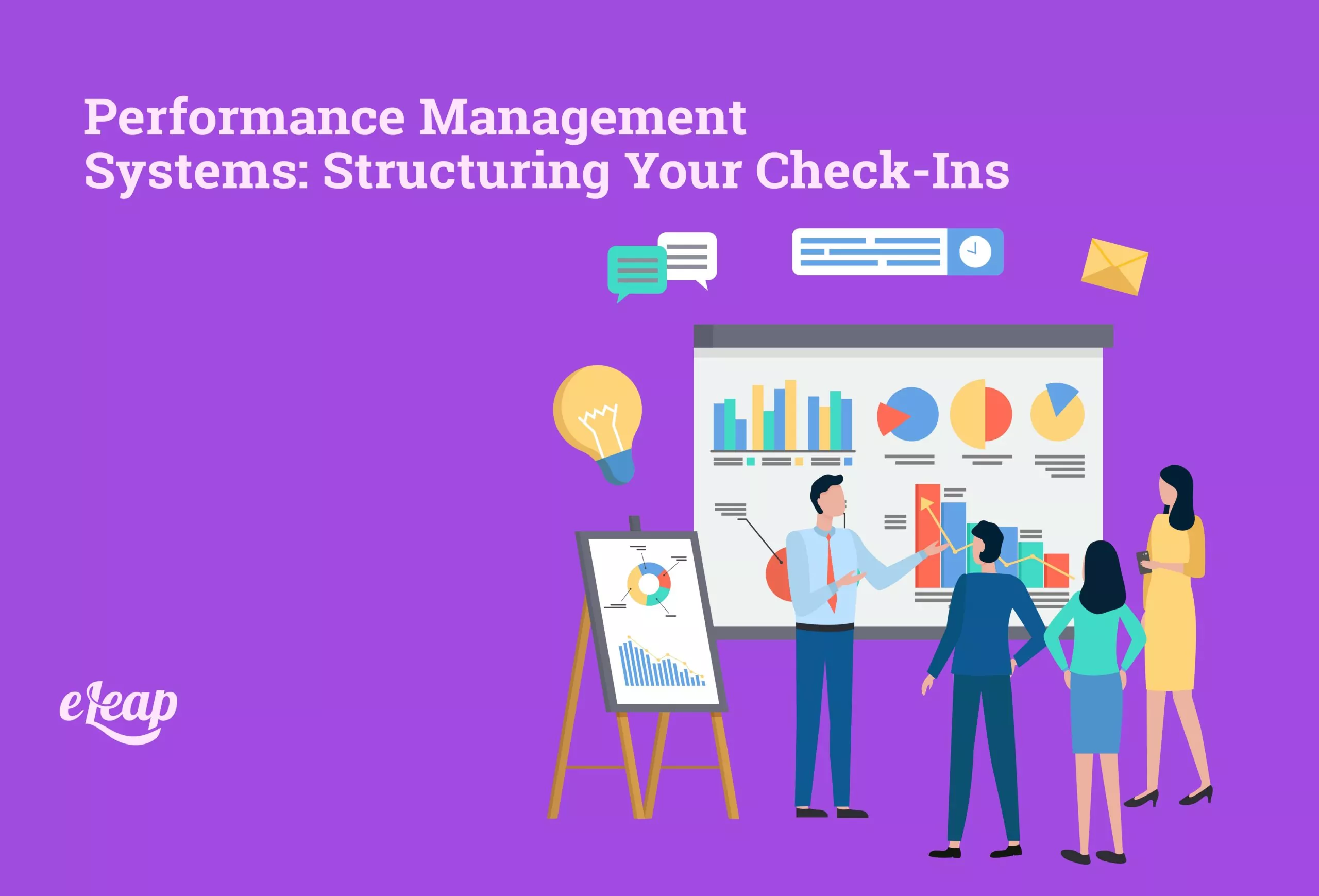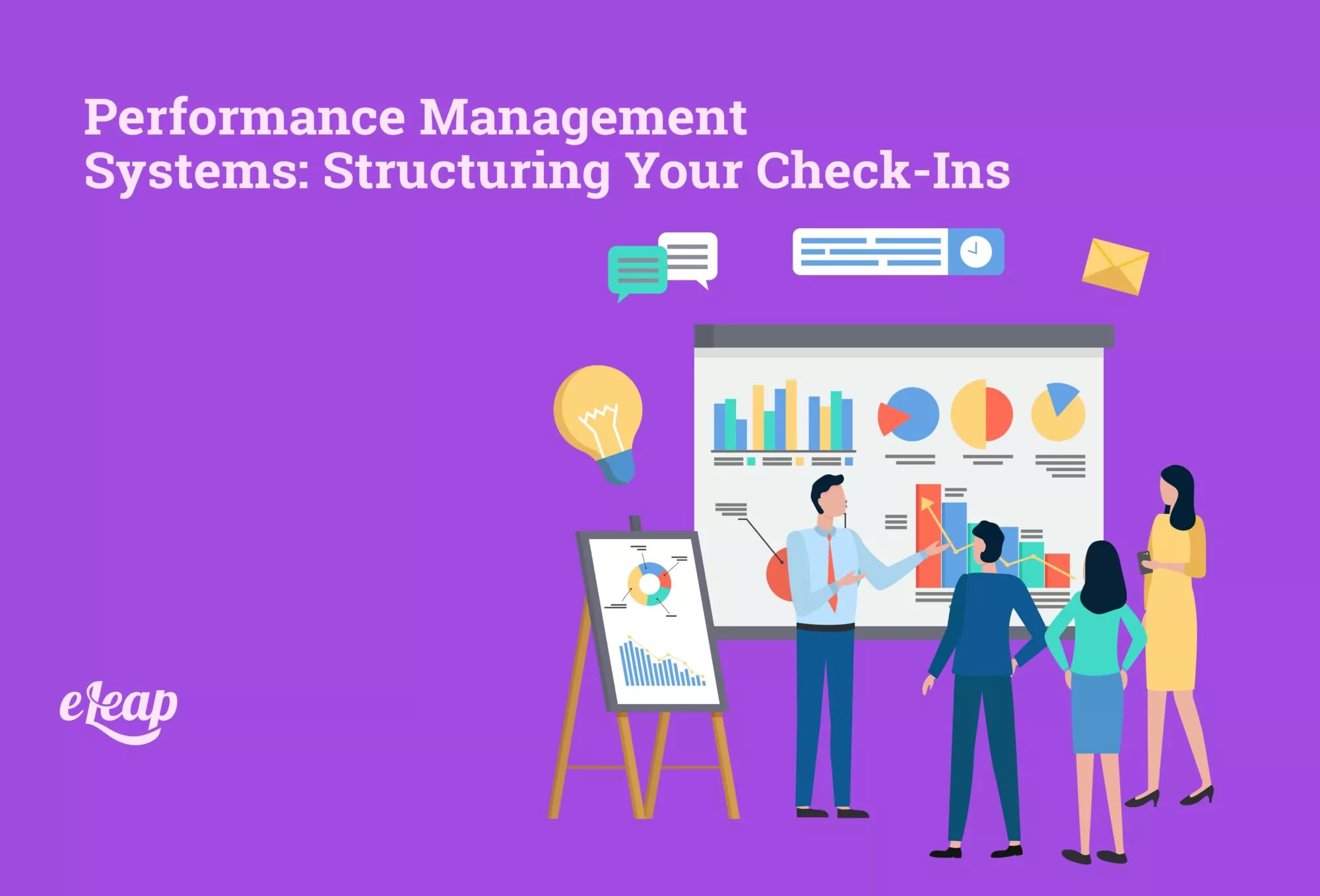Performance Management Systems: Structuring Your Check-Ins

Today’s performance management systems barely resemble their predecessors. Gone is the carrot and stick mentality that doled out rewards with one hand while threatening punishments with the other. Largely gone, too, are the annual performance reviews – those dreaded once or twice-a-year sit-downs with management during which employees usually got to learn how much of a disappointment they were to the organization.

Instead, today’s performance management systems focus on creating actionable change through what is called check-ins. These are frequent meetings between team members and leaders that help create a two-way flow of information, ensure that employees receive information to course-correct promptly, and generally improve the operation of the entire organization.
As you can imagine, check-ins are pretty important, despite the casual-sounding name. Because of their role in your performance management system and their vitalness to your organization’s performance and continued success, it’s necessary to know how to structure them.
What’s a Check-In?
First, let’s explore the entire point of the check-in. It’s pretty self-explanatory. These are ongoing one-on-one conversations between an employee and a manager/leader focused on the following:
- Work progress
- Goals
- Employee performance
- Strategy moving forward
Check-ins are held at regular intervals, such as daily, weekly, or monthly, and focus on creating a conversation rather than a one-way flow of information. Often, employees are encouraged to provide feedback to leaders on management’s performance, too. As such, it’s a reversal of the performance review mentality, which was more akin to a suspect interrogation than a conversation.
In comparison to annual performance reviews, which focus on the company holding an employee accountable and assessing their value to the organization, check-ins shift the paradigm. It focuses on the fact that employees want to do a better job but may need help in doing so. They also want to learn, develop, and grow as individuals. It is the company’s responsibility to support that development.
Adobe’s Example
Adobe is perhaps the most famous example of a company putting check-ins into practice. This was the first firm to announce they were abandoning annual performance reviews and embracing a new performance management methodology. Adobe’s format is based on three cornerstones:
- Expectations – This segment refers to setting, tracking, and reviewing clearly outlined expectations and objectives. Both the employee and the organization should agree on roles and responsibilities here. It cannot be one-sided. Check-ins are opportunities to monitor progress toward those goals.
- Feedback – In the check-in format, feedback refers to an ongoing conversation focused on mutual coaching. It’s a two-way flow of information. An actual conversation, if you will. It also encompasses how employees learn to improve performance and achieve goals more quickly.
- Growth and Development – Employees cannot succeed if they cannot grow and develop. Without successful employees, businesses, and organizations cannot thrive. Growth and development of skills, knowledge, and abilities support improved performance, clearer decision-making, and better alignment between an employee’s personal goals and an organization’s objectives.
Creating the Right Structure
Successful performance management systems require specific components. In this case, check-ins. However, without the right structure, your check-ins may be less effective than otherwise. It’s important to understand the elements involved. Thankfully, it doesn’t have to be complicated. Remember – you’re trying to foster a conversation, not censure an employee.
Begin with Accomplishments
Start with the employee’s accomplishments. Put things in a positive light by allowing the employee to explain the most important things they accomplished since the last check-in. If you’re doing weekly check-ins, there will be fewer accomplishments than if you’re following a monthly or quarterly plan. Ask the employee to describe the five to 10 things they’re most proud of accomplishing.
Move to Goals
With the accomplishments out of the way, it’s time to focus on forward momentum. What are the employee’s goals? What are they striving to accomplish? What do they want to do, and how do those goals support both the employee and the organization?
What Can Be Improved?
Now it’s time to focus on improvement. Ask the employee where they feel that they can improve in their performance, but also ask what they need to achieve improvement. Do they have the tools they require? The support from management? The education/learning materials? How can the organization help the employee succeed?
Consider the Frequency
One reason that check-ins work so much better than annual or twice-yearly performance reviews is that they occur with so much more frequency. This allows them to be dramatically different from their predecessors. Annual performance reviews are almost solely backward facing. They focus on things that are no longer in the employee’s control and then base their future compensation or even their very employment on those.
With check-ins, the situation is very different. Instead of facing the past, they face today. They allow employees to react, learn, and course-correct almost in real-time. It’s about progress and the employee’s ability to measure it. When an employee feels they are supported and that they are making forward progress toward reaching goals or objectives, their motivation is highest. It’s not so much about recognition or compensation. Creating a thriving organization just comes down to supporting your team and providing them with the tools, systems, platforms, and opportunities to improve themselves personally and professionally.
The more frequent your check-ins are, the more real-time course correction is possible. However, the more frequent they become, the more they become like meetings – unnecessary drains of time. The best advice here is to set a schedule that works for your organization and, more importantly, your team members. That might be daily, but it might be weekly or even monthly.
Conclusion
Today’s performance management systems are dramatically different from what has gone before. Check-ins are one of the most visible ways they differ. These informal meetings encourage actual dialogue and make real change and improvement possible. Create a structure that works for your team that supports the ability to have a conversation surrounding expectations, feedback, and growth and development.